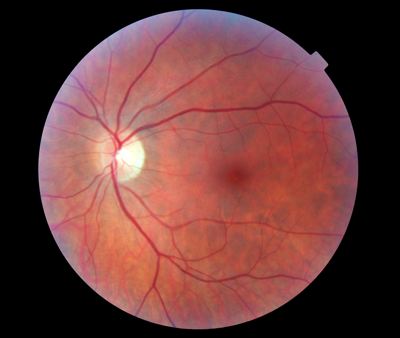
PHILADELPHIA-CRISPR-Cas9 gene editing was found to be safe and largely effective in addressing a form of inherited blindness in a group of patients that, for the first time, included children. In a multi-site clinical trial called BRILLIANCE that included researchers from the Perelman School of Medicine at the University of Pennsylvania and Children's Hospital of Philadelphia (CHOP), 14 people-including two children under 17 years old-with Leber Congenital Amaurosis (LCA), a form of blindness resulting from mutations in the CEO290 gene, received a single, surgical injection of a gene editing agent. Of those 14, nearly half reported measurable improvements in sight, including the two children according to the study, published today in the New England Journal of Medicine (NEJM).
"Our patients are the first congenitally blind children to be treated with gene-editing, which significantly improved their ability to see things like daylight. Our hope is that the study will pave the road for treatments of younger children with similar conditions and further improvements in vision," said Tomas S. Aleman, MD, the Irene Heinz-Given and John LaPorte Research Professor in Ophthalmology at Penn Medicine with the Scheie Eye Institute and a pediatric ophthalmologist at CHOP who served as a site principal investigator and study co-author. "This trial represents a landmark in the treatment of genetic diseases, in specific, genetic blindness, by offering an important alternative treatment, when traditional forms of gene therapy, such as gene augmentation, are not an option."
The researchers used a host of measures to test whether the procedure improved vision, including one that tests how bright a flash needs to be to be detected (dark-adapted full-field stimulus testing), and another measured by participants moving through a physical maze (visual function navigation). In the end, 11 patients experienced improvement in at least one measure, while six showed improvement in two or more. Meaningful improvements were seen in six patients in "cone-mediated vision," referring to the cone photoreceptors in the retina that allow us to perceive color.
There were no events of side effects reported in the study or any "dose-limiting toxicities" that would have required the treatment level to be changed. The treatment, EDIT-101, is manufactured by Editas Medicine Inc., which helped fund the study.
CHOP and Penn Medicine served as a study site for the pediatric portion of the study, while the main principal investigator was Eric Pierce, MD, PhD, of Mass Eye and Ear, a member of the Mass General Brigham healthcare system. The other site that participated was the Casey Eye Institute at Oregon Health & Science University, under the leadership of Mark Pennesi, MD, PhD.
In addition to the funding from Editas, the research was supported by supported by the National Institutes of Health (P30 EY014104, P30 EY010572), the Malcolm M. Marquis MD Endowed Fund for Innovation, and unrestricted grants from Research to Prevent Blindness to Casey Eye Institute and the Scheie Eye Institute. Additional support was provided by the Irene Heinz Given and John La Porte Given Endowment, and Hope for Vision.






